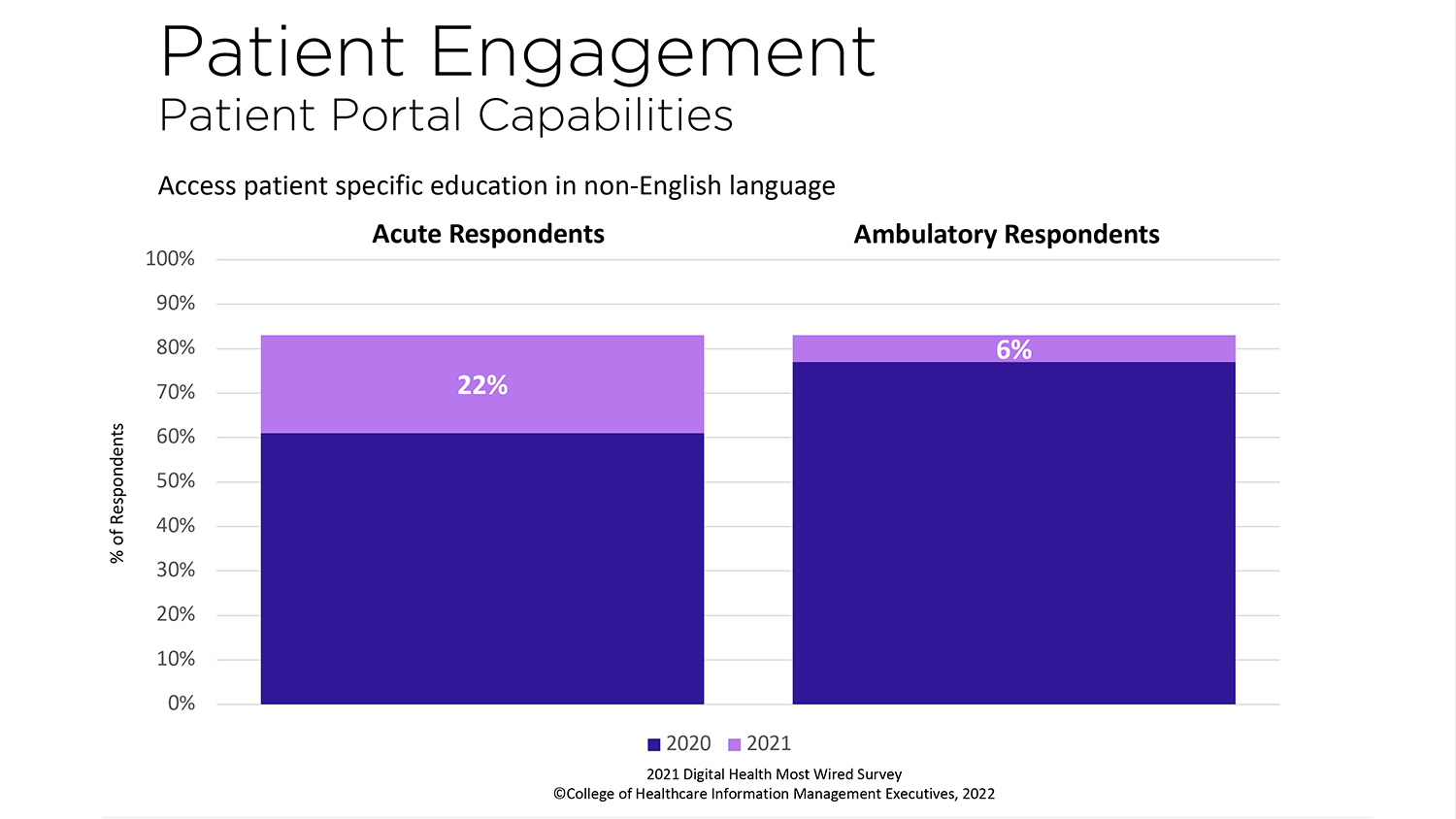Plugging into advanced patient engagement data delivery
Almost all healthcare provider organizations use at least one delivery modality to report patient engagement/ satisfaction data to their clinicians. However, ambulatory clinics rely more heavily on manual reporting formats than acute care hospitals, according to the 2021 Digital Health Most Wired (DHMW) survey. The findings suggest that ambulatory organizations trail their acute-care peers in using technology to support patient engagement/satisfaction initiatives more efficiently and effectively.

Source: Digital Health Analytics
The DHMW research segments the way in which clinicians receive patient feedback as either advanced (using visualization tools and real-time analytics) or manual (using spreadsheets, graphs, pivot tables and paper/PDF-based reports). Across all types of organizations, more than half use four or more mechanisms to report patient engagement/ satisfaction metrics to clinicians, whereas only about 12 percent rely on a single means of delivery. About three-quarters of all organizations use a mix of advanced and manual modalities.
Related story: Top 3 patient engagement strategies to reduce spending, improve outcomes
Divergence appears when analyzing hospitals vs. ambulatory clinics. Roughly 18 percent of hospitals use advanced delivery formats compared to about 8 percent of ambulatory settings. Further, 22 percent of ambulatory clinics use manual modalities, nearly double the rate of hospitals.
Follow the patient’s lead
The DHMW report acknowledges that patient compliance — and by extension, clinical outcomes — can be greatly influenced by satisfaction with their provider. Separate studies reinforce that satisfied patients are more likely to follow through with their treatment plans and to recommend their provider.
As such, it makes sense to deliver patient satisfaction/engagement metrics to caregivers in the most meaningful ways. Advanced technologies, such as visualization tools that offer options to drill down into details, uncover opportunities for clinicians to learn about perceived shortcomings and what patients really want to know.
The use of patient engagement technology is on the upswing, which bodes well for ambulatory organizations looking to deliver more relevant data to clinical staff. Patients are increasingly taking advantage of portals for expected conveniences such as requesting prescription refills, scheduling appointments, accessing educational content, and providing medical history information directly into the electronic health record system. Patients are also responding well to online symptom checkers, disease management modules, price estimators and self-check-in tools.
Organizations that keep caregivers plugged in to the digital experience with the latest data-delivery technologies stand the best chance of creating and sustaining positive and long-lasting patient relationships.
Frank Irving is a Philadelphia-based content writer and communications consultant specializing in healthcare, technology and sports.